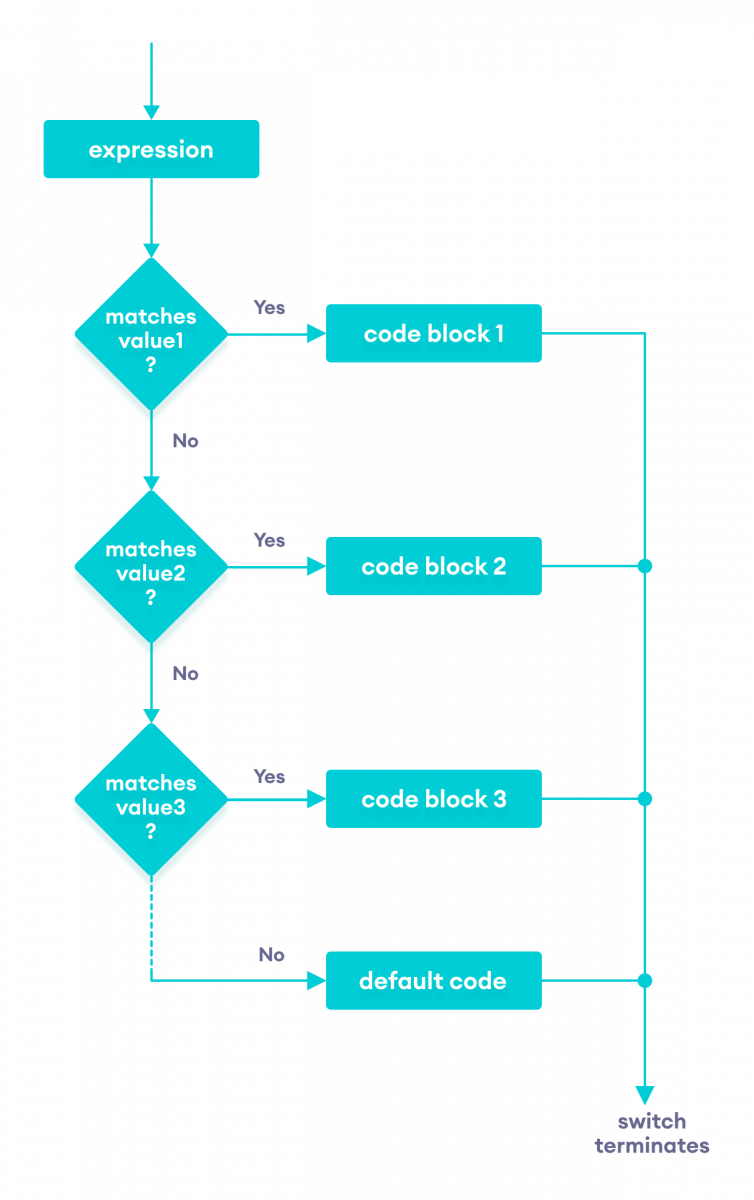
The switch statement allows us to execute a block of code among many alternatives.
Syntax:
switch (expression) < case value1: // code break; case value2: // code break; . . default: // default statements >How does the switch-case statement work?
The expression is evaluated once and compared with the values of each case.
Note: The working of the switch-case statement is similar to the Java if. else. if ladder. However, the syntax of the switch statement is cleaner and much easier to read and write.
// Java Program to check the size // using the switch. case statement class Main < public static void main(String[] args) < int number = 44; String size; // switch statement to check size switch (number) < case 29: size = "Small"; break; case 42: size = "Medium"; break; // match the value of week case 44: size = "Large"; break; case 48: size = "Extra Large"; break; default: size = "Unknown"; break; >System.out.println("Size: " + size); > >Output:
Size: Large
In the above example, we have used the switch statement to find the size. Here, we have a variable number . The variable is compared with the value of each case statement.
Since the value matches with 44, the code of case 44 is executed.
size = "Large"; break;Here, the size variable is assigned with the value Large .
Also Read:

Notice that we have been using break in each case block.
. case 29: size = "Small"; break; .
The break statement is used to terminate the switch-case statement. If break is not used, all the cases after the matching case are also executed. For example,
class Main < public static void main(String[] args) < int expression = 2; // switch statement to check size switch (expression) < case 1: System.out.println("Case 1"); // matching case case 2: System.out.println("Case 2"); case 3: System.out.println("Case 3"); default: System.out.println("Default case"); >> >Output
Case 2 Case 3 Default case
In the above example, expression matches with case 2 . Here, we haven't used the break statement after each case.
Hence, all the cases after case 2 are also executed.
This is why the break statement is needed to terminate the switch-case statement after the matching case. To learn more, visit Java break Statement.
The switch statement also includes an optional default case. It is executed when the expression doesn't match any of the cases. For example,
class Main < public static void main(String[] args) < int expression = 9; switch(expression) < case 2: System.out.println("Small Size"); break; case 3: System.out.println("Large Size"); break; // default case default: System.out.println("Unknown Size"); >> >Output
Unknown Size
In the above example, we have created a switch-case statement. Here, the value of expression doesn't match with any of the cases.
Hence, the code inside the default case is executed.
default: System.out.println("Unknown Size);Note: The Java switch statement only works with:
Also Read: